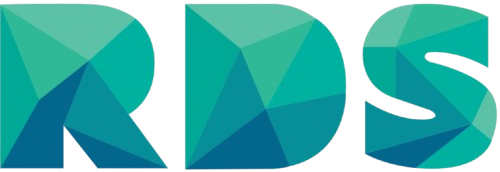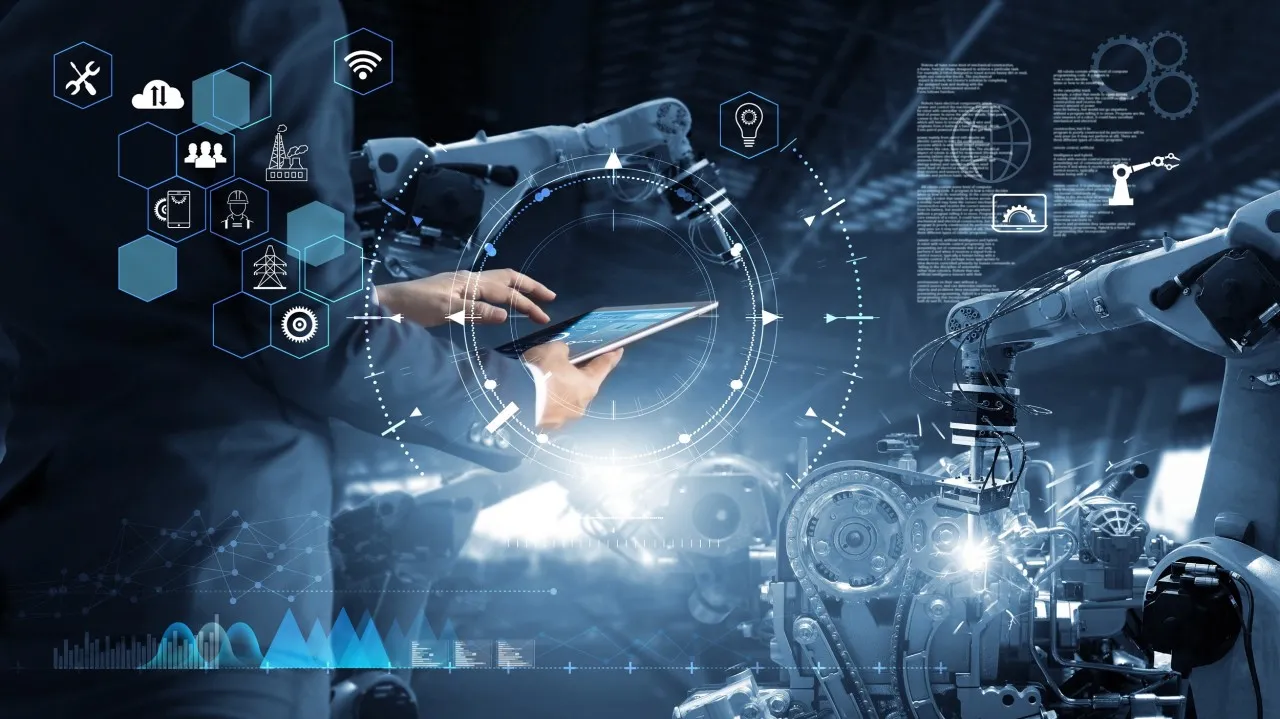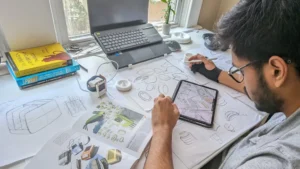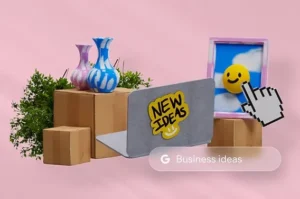Tomorrow’s Products Are Being Designed Today: The Evolving Landscape of Industrial Design
Did you know that 83% of executives identify design as a critical competitive differentiator, yet only 17% believe their organizations are fully prepared for the rapidly evolving design landscape? The gap between recognizing design’s importance and effectively leveraging emerging approaches represents both challenge and opportunity for forward-thinking companies.
For product developers, manufacturers, and design teams, the industrial design landscape is shifting at unprecedented speed. Technological breakthroughs, changing consumer expectations, and environmental imperatives are transforming not just what we design, but how we design it. Which emerging approaches will fundamentally reshape product development, and which will prove merely temporary diversions?
In this comprehensive guide, we’ll explore the most significant trends shaping the future of industrial design. Drawing from our extensive experience across consumer electronics, automotive, medical, and industrial sectors, we’ll reveal the approaches already transforming how leading companies conceptualize, develop, and deliver breakthrough products.
AI-Augmented Design: Collaboration Between Human Creativity and Machine Intelligence
Perhaps no trend is transforming industrial design more rapidly than the integration of artificial intelligence into the creative process. Rather than replacing human designers, AI is emerging as a powerful collaborator that amplifies creativity while handling computational complexity.
According to research from the Massachusetts Institute of Technology (MIT), design teams using AI-augmented approaches are demonstrating 37% higher productivity and 28% greater exploration of design alternatives compared to traditional methods.
At RDS, our industrial design approach increasingly incorporates AI through several key applications:
- Generative design exploration: Using AI to generate multiple design variations based on functional parameters and aesthetic guidelines
- Design optimization: Refining concepts for manufacturability, material efficiency, and structural integrity
- User experience simulation: Predicting how diverse users will interact with design concepts
- Trend analysis and forecasting: Identifying emerging patterns across industries and markets
A medical device we recently helped develop illustrates this approach in action. By feeding functional requirements, ergonomic parameters, and brand guidelines into an AI design system, we generated 48 distinct design approaches in three days—an exploration that would have traditionally required weeks. Our industrial designers then refined and developed the most promising directions, combining human insight with computational efficiency.
The most sophisticated implementations avoid treating AI as a “black box” solution, instead establishing collaborative workflows where human designers and AI systems each contribute their unique strengths. According to the Industrial Designers Society of America (IDSA), this collaborative approach typically yields solutions that are both more innovative and more implementable than either human-only or AI-only processes.
Digital-Physical Blurring: Products as Hybrid Experiences
The traditional boundaries between physical products and digital experiences continue to dissolve, creating new industrial design challenges and opportunities. Today’s most compelling products are neither purely physical objects nor digital interfaces, but thoughtfully integrated hybrid experiences.
Our product design and 3D modeling services increasingly focus on this integration, designing products where:
- Physical forms guide digital interaction: Using tangible elements to make digital experiences more intuitive
- Digital capabilities enhance physical functionality: Extending what physical products can do through connected intelligence
- Interface boundaries disappear: Creating seamless transitions between physical and digital interaction modes
- Products evolve over time: Designing for ongoing enhancement through digital updates to physical products
A consumer electronics product we helped develop exemplifies this approach. Rather than treating physical and digital design as separate considerations, we developed them in parallel with constant cross-referencing. The physical controls guide users naturally to digital functions, while the digital interface references physical interactions—creating a cohesive experience that feels natural despite its technical sophistication.
According to research from the Consumer Technology Association, products with thoughtfully integrated physical-digital experiences show 42% higher user satisfaction and 36% stronger brand loyalty compared to those where physical and digital elements feel disconnected.
The most successful implementations recognize that users don’t think in terms of “physical” versus “digital”—they simply want products that solve their problems intuitively and delightfully. This requires industrial designers to expand their skills into digital territories while maintaining their core expertise in physical experience creation.
Sustainable Design Becomes Non-Negotiable: Beyond “Green” to Circular
While sustainability has influenced industrial design for decades, it has evolved from a specialized focus to a fundamental requirement integrated throughout the design process. The future of industrial design is not just “green” but truly circular—designing products specifically for multiple lifecycles.
Our engineering design team approaches sustainable design through several advanced strategies:
- Design for disassembly and material recovery: Creating products specifically to be taken apart for component reuse and material recycling
- Material innovation and selection: Identifying and implementing novel sustainable materials that don’t compromise performance
- Lifecycle optimization: Designing products to minimize environmental impact across manufacturing, use, and end-of-life phases
- Circular business model integration: Creating products that support rental, repair, refurbishment, and recycling business approaches
According to the Ellen MacArthur Foundation, products designed specifically for circular economy models can reduce resource consumption by up to 80% compared to traditional linear approaches while creating new economic opportunities.
A furniture system we helped redesign illustrates this approach. Rather than focusing merely on sustainable materials, we reconceived the entire product lifecycle—designing for initial manufacturing efficiency, modular updating during use, and complete disassembly at end-of-life. The system uses standardized connectors, avoids adhesives that prevent disassembly, and includes embedded information to facilitate future recycling.
The most sophisticated sustainable design approaches don’t just reduce negative environmental impact but create regenerative systems that actually improve environmental conditions through their existence and use.
Hyper-Personalization Through Adaptive Design Systems
Mass production is giving way to mass customization, and now to what might be called “unique production”—creating products that adapt to individual users automatically rather than requiring explicit customization choices.
Our mechanical design services increasingly incorporate adaptive elements that allow products to reconfigure for individual users:
- Self-adjusting physical elements: Components that adapt to different body sizes and capabilities
- Learning algorithms: Systems that observe and adapt to user behavior patterns
- Modular architecture: Product designs that allow easy reconfiguration without manufacturing changes
- Responsive materials: Materials that change properties based on environmental conditions or user interaction
According to research from the Harvard Business Review, products with effective adaptive personalization show 28% higher customer satisfaction and typically command price premiums of 15-20% over non-adaptive alternatives.
An ergonomic device we recently helped develop exemplifies this approach. Rather than requiring manual adjustment, the product incorporates sensors that detect user anthropometry and usage patterns, automatically adjusting its configuration for optimal ergonomics. This approach delivers personalized experiences without burdening users with complex setup procedures.
The most successful implementations of adaptive design don’t just offer customization but predict and provide what users need before they explicitly request it—creating products that feel almost intuitive in their responsiveness.
Advanced Manufacturing Technologies Reshaping Design Possibilities
Emerging manufacturing technologies are eliminating traditional design constraints and enabling entirely new product possibilities. Industrial designers who understand and leverage these capabilities are creating products that would have been impossible just years ago.
Through our 3D printing services, we’re exploring manufacturing advances including:
- Multi-material additive manufacturing: Creating parts with varying material properties in a single process
- 4D printing: Developing components that transform after manufacturing based on environmental triggers
- Hybrid manufacturing processes: Combining additive and subtractive techniques in integrated systems
- Digital manufacturing networks: Distributing production geographically while maintaining design integrity
According to the National Institute of Standards and Technology (NIST), these advanced manufacturing approaches typically reduce development time by 35-60% while enabling design features impossible with traditional manufacturing methods.
A medical product component we designed illustrates this approach. Using multi-material 3D printing, we created a single component with varying rigidity across its structure—firm where structural strength was needed and flexible where comfort was priority. This would have required multiple parts and assembly with traditional manufacturing but was produced as a unified component through advanced additive processes.
The most effective design approaches don’t just adapt existing concepts to new manufacturing methods but reconceive products entirely based on the unique capabilities these technologies enable.
Biologically Inspired Design: From Biomimicry to Biodesign
Nature’s 3.8 billion years of evolution represents the ultimate design laboratory. The future of industrial design increasingly draws not just inspiration but actual methodologies from biological systems.
Our conceptual design process incorporates biological principles in several ways:
- Structural biomimicry: Adapting nature’s efficient structural solutions to product design challenges
- Process biomimicry: Implementing design and production processes that mimic natural systems
- Biocomposite materials: Incorporating biological materials or biologically produced components
- Living product elements: Integrating actual living organisms into product systems where appropriate
According to research published in the Journal of Mechanical Design, products developed through biomimetic approaches typically show 20-40% improvements in resource efficiency compared to conventionally designed alternatives.
A structural component we helped redesign demonstrates this approach. By analyzing bone growth patterns, we developed an algorithm that generated an optimized internal structure similar to trabecular bone—creating a component 62% lighter than the original while maintaining equal strength. This approach not only reduced material usage but improved performance through nature-inspired design.
The most advanced bio-inspired approaches are moving beyond merely copying natural forms to implementing nature’s underlying principles and processes—creating truly regenerative product systems rather than just more efficient versions of conventional designs.
Immersive Design Development: AR/VR Transforming the Process
Virtual and augmented reality technologies are transforming not just how we use products but how we design them. These immersive technologies enable entirely new design processes that enhance creativity, improve collaboration, and accelerate development.
Through our reverse engineering and CAD services, we’re implementing immersive design approaches including:
- Virtual design reviews: Evaluating concepts in immersive 3D environments before physical prototyping
- Collaborative virtual spaces: Enabling geographically distributed teams to work together in shared virtual environments
- Scale experimentation: Testing designs at various scales instantaneously
- Contextual simulation: Placing design concepts in realistic virtual usage environments
According to research from the Virtual Reality Society, design teams using immersive technologies demonstrate 43% better spatial understanding of concepts and identify 37% more potential issues before physical prototyping compared to traditional methods.
A transportation design project illustrates this approach. Using VR systems, our design team evaluated full-scale virtual prototypes from multiple user perspectives—driver, passenger, maintenance technician—identifying ergonomic issues that would have been difficult to detect in conventional renderings or scale models. This approach reduced costly late-stage design changes by approximately 60%.
The most effective implementations recognize that immersive technologies aren’t just visualization tools but new design environments that fundamentally change how designers think about and develop concepts.
Case Study: Future-Forward Design Integration
To illustrate how these trends work together in practice, consider this case study from our portfolio:
A manufacturer of professional equipment approached us seeking to leapfrog competitors through innovative design. Rather than incrementally improving their existing products, they wanted to fundamentally reimagine their category.
Our approach integrated multiple future-focused design strategies:
- AI-augmented exploration generated diverse design directions based on functional requirements and user research
- Digital-physical integration created seamless connections between physical controls and digital capabilities
- Sustainable design principles enabled a circular lifecycle through modular architecture and design for disassembly
- Adaptive personalization allowed the product to automatically configure for different user scenarios
- Advanced manufacturing techniques enabled previously impossible geometries and material combinations
- Biomimetic structures reduced weight while increasing durability
- Immersive development allowed rapid prototyping and testing in virtual environments
The resulting product represented a genuine category breakthrough, with:
- 43% less material usage than competitive products
- 67% faster user onboarding due to intuitive physical-digital integration
- 28% higher performance ratings across diverse user groups
- 5-year lifecycle extension through modular upgradeability
This case demonstrates how integrating multiple forward-looking design approaches can create products that don’t just compete but redefine market expectations.
Implementation Strategy: Bringing Future Design Approaches to Your Organization
For organizations seeking to implement these future-focused design approaches, we recommend a phased strategy:
Phase 1: Assessment and Foundation Building
Begin by evaluating your current design capabilities and establishing necessary foundations:
- Audit existing design processes to identify opportunities for enhancement
- Build cross-functional literacy in emerging design approaches
- Establish technology infrastructure to support advanced design methods
- Develop metrics for evaluating new design approaches against business objectives
This foundational work ensures you can effectively implement new approaches without disrupting existing development.
Phase 2: Pilot Projects and Capability Building
With foundations in place, implement new approaches through focused initiatives:
- Select strategic pilot projects with meaningful but manageable scope
- Partner with specialized expertise where internal capabilities are still developing
- Document and analyze outcomes to build internal knowledge
- Establish centers of excellence around specific future-focused design approaches
Our 3D scanning services often support these pilot projects by creating digital models of existing products that serve as baselines for implementing new design approaches.
Phase 3: Systematic Integration and Scaling
Based on pilot results, methodically integrate successful approaches into standard processes:
- Update design methodologies to incorporate proven new approaches
- Implement supportive technologies across the organization
- Train broader design and engineering teams on new methodologies
- Revise metrics and incentives to encourage future-focused design thinking
This systematic approach allows organizations to transform their design capabilities without the risks of wholesale change or the limitations of perpetual pilot projects.
Conclusion: Designing the Future, Not Just for It
As we’ve explored throughout this article, the future of industrial design isn’t a distant prospect—it’s being actively shaped by organizations implementing emerging approaches today. The most successful companies recognize that these trends aren’t merely technical evolutions but fundamental transformations in how we conceive, develop, and deliver products.
The industrial designers who will define tomorrow’s products aren’t just learning new tools—they’re developing new mindsets that blend technological sophistication with human insight, environmental responsibility, and business acumen. They recognize that future products won’t be distinguished by mere aesthetics or features but by the thoughtful integration of physical and digital experiences that genuinely enhance human life.
For organizations committed to leadership through design, the imperative is clear: invest in these emerging approaches not as experimental side projects but as core capabilities essential to future competitiveness. The products that will dominate markets tomorrow are already being conceived through these advanced design methodologies today.
Ready to implement future-focused industrial design in your product development process? Our team brings expertise in emerging design approaches to help your products lead rather than follow market evolution. Contact us to discuss your innovation challenges, or explore our blog for more insights on advanced design methodologies.
Which emerging design trend do you believe will most impact your industry in the next five years? Share your thoughts in the comments below!





